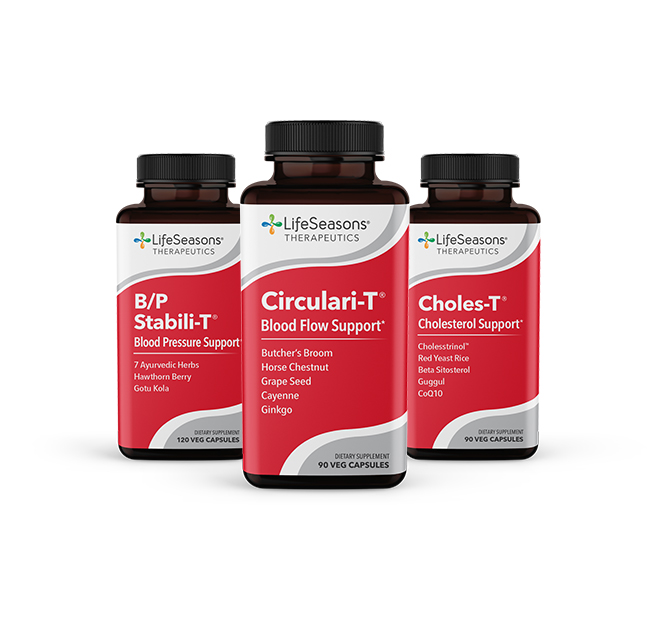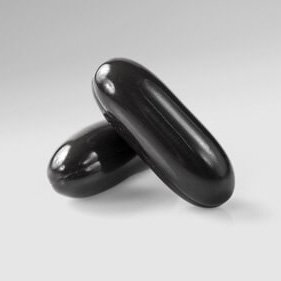BACKGROUND
Ingredient Type: Botanical, Extract
Also Known As: Borforsin, Coleus, Coleus barbatus

Coleus forskohlii (CF) is a perennial wild-growing tuberous plant from the Lamiaceae family, native to India (3). This herb has been used for centuries in Hindu and Ayurvedic medicine. In the ancient Sanskrit texts, the herb is known as Makandi. The majority of the medicinal use stems from the C. forskohlii root, which can either be prepared into a powder, an herbal tincture, tea, or pickled. The main active ingredient used in the west is the extracted forskolin. Nutrient wise, the plant contains carbohydrates and insoluble fiber. In a recent study, C. forskohlii was also found to have high amounts of polyphenols, flavones, flavanols, along with antioxidant qualities (2).
Born in Finland was an explorer, orientalist, naturalist, and apostle of Carl Linnaeus, Peter Forsskal. He spent his life traveling and collecting and analyzing botanical specimens in various parts of the world. He discovered C. forskohlii, hence the plant’s name. Since its discovery, C. forskohlii, specifically forskolin, has been widely used in both the dietary supplemental and pharmaceutical industries.
TRADITIONAL USES
In traditional ayurvedic medicine, this herb has been used for over 3,000 years. C. forskohlii has historical application support cardiovascular, hepatic, gastrointestinal, pulmonary, immune, and even cognitive function (5, 6).
In the U.S., however, there is very limited research and scientific evidence behind C. forskohlii. The majority of the research and claims are associated with the extracted constituent, forskolin. This ingredient is known to stimulate cyclic adenosine monophosphate (cAMP), along with other biologically necessary activities. Forskolin supports the regulation of various enzymes and hormones and other metabolic processes related to energy use and production (4).
WHAT DOES SCIENCE TELL US?
Coleus Forskohlii Possibly Helps Support the Immune System:
Cyclooxygenase (COX-2) is important in regulating several inflammatory processes, especially regarding pulmonary function and asthma. In this study, the effects of COX-2 and other agents that modulate cyclic adenosine monophosphate (cAMP) such as forskolin, a constituent found in C. Forskohlii. Cells were stimulated with a combination of pro-inflammatory cytokines for 24-hours. It was noted from the results that such cAMP-inducing drugs, including C. forskohlii derived forskolin, are capable of blocking the production of potentially inflammatory proteins (7).
Pathogen-associated molecular patterns (PAMPs) and damage-associated molecular patterns (DAMPs) are very important markers that aid in developing a strategic defense against various inflammatory diseases. This study was conducted to assess the cAMP-induced modulation of the receptor for advanced glycation end-products, one of the pattern recognition receptors (PRRs) like PAMPs and DAMPs. This PRR has been implicated in various autoimmune and inflammatory diseases. It was noted that C. Forskohlii derived forskolin inhibited peritoneal macrophage accumulation in a mouse S100B-induced peritonitis model. The concluding results suggest that cAMP serves as a negative regulator of ligand-RAGE-signaling and macrophage recruitment through down-regulation and decoys formation as soluble receptors. It was concluded that through the suppression of the RAGE protein, cAMP could reduce inflammation as RAGE is one of the proteins responsible for developing inflammation (8).
It is known that an increase of cAMP inhibits a variety of lipopolysaccharide-elicited macrophage inflammatory responses. Macrophages, being one of the central mediators within the innate immune system due to their ability to differentiate from monocytes when encountering cytokines, along with their important function in detecting and destroying foreign pathogens and apoptotic cells. This study was conducted to assess the effects of elevated cAMP on monocyte/macrophage differentiation. It was noted in the study that during differentiation, cAMP agonists could cause a significant increase in mRNA and protein levels of several pro-inflammatory chemokines. These chemokines are critical in regulating the immune response, specifically regarding the pathogenesis of asthma and chronic obstructive pulmonary disorder (COPD). Additionally, it was found that selective cAMP-degrading phosphodiesterase (PDE) 4 inhibitor can potentiate the chemokine expression elicited by low-dose forskolin or Prostaglandin E2. Their research suggests that forskolin supports immune cell production of various beneficial in treating chronic inflammation (9).
Coleus Forskohlii Possibly Supports Healthy Cell Growth:
The aberrant activity of oncogenic kinases characterizes several cancers. Protein phosphatase-2A (PP2A) is one of the major cellular phosphatases involved in homeostatic cellular regulation through negative regulation of signaling pathways initiated by protein kinases. Multiple solid tumors (melanomas, colorectal carcinomas, lung, prostate, and breast cancers) present with genetic and functional inactivation of different PP2A subunits; therefore, loss of PP2A activity towards certain substances. Impaired PP2A activity has been linked to B-cell chronic lymphocytic leukemia, Philadelphia-chromosome positive acute lymphoblastic leukemia, and blast crisis chronic myelogenous leukemia. Drugs such as forskolin, 1,9-dideoxy-forskolin, and FFT720, which lead to PP2A activation, effectively antagonize leukemogenesis in vitro and in vivo. With a better understanding of the metabolic pathways involved in the growth and inhibition of certain cancers, researchers can seek alternatives such as forskolin to block cancer growth through the activation of PP2A. (10,11,12,14).
The cAMP pathway is known to kill multiple myeloma (MM) cells, both in vitro and in vivo. This study was conducted to investigate the potential of enhancing the killing of MM cell lines and primary MM cells by combining cAMP-elevating compound forskolin with the commonly used MM therapeutic drugs melphalan, cyclophosphamide, doxorubicin, bortezomib, and dexamethasone. From the results, it was observed that forskolin potentiated the killing induced by all tested agents compared to the treatment with the single agents alone. Particularly, it was noted that forskolin had a synergistic effect on the dexamethasone-responsive cell lines H929 and OM-2. It was suggested that forskolin was able to maintain the killing of MM cells even at lower concentrations of the conventional agents, suggesting that forskolin may be used to diminish treatment-associated side effects. Additionally, the findings also support the potential role of forskolin in conjunction with conventional agents in treating multiple myeloma (13).
A study was conducted to determine the mechanism of cell signal-regulated alternative splicing during neuronal differentiation. An isolated protein kinase A-responsive ribonucleic acid (RNA) element from a 3′ splice site of the synaptosomal-associated protein 25 gene for forskolin-inhibited splicing during neuronal differentiation of rat pheochromocytoma PC12 cells. The research indicated that forskolin could edit the gene products of certain brain cancer cell lines, thus having the potential to prevent the development of these new brain cancer cells (15).
Coleus Forskohlii Might Support Cardiovascular Health:
This recent clinical study was conducted to investigate the effect of a wild-source of Makandi (Coleus forskohlii) Ghana Vati and Churna tablets of its powder on a group of geriatric individuals (aged 50-80) with hypertension. A total of 42 patients were split into two groups receiving one of the two forms of treatment, Makandi Ghana Vati or the tablets of its powered. The following parameters were measured to demine the effectiveness: systolic and diastolic blood pressure (sitting and supine positions), general symptomology, geriatric signs, symptoms, and a brief psychiatric rating scaled assessment. It was concluded from the results that either form of Makandi, either Ghana Vati or in Churna tablet form, were effective in treating hypertension in the geriatric group, with an average of 75% improvement between group I and group II (16).
This study was conducted to determine the efficacy of NKH477, a novel water-soluble forskolin derivative, on the improvement of cardiac failure in dog heart-lung preparations. Depressed cardiac function was suppressed through the induction of pentobarbital, propranolol, or verapamil to reduce the cardiac output by 40-50%. From the results, it was noted that there was a noted significant improvement following the treatment of NKH477 in a dose-dependent manner. With 100 micrograms of NKH477, nearly complete restoration of cardiac function was noted. A combination of NKH477 and ouabain, 30 micrograms of each, was seen to have restored entirely cardiac function previously depressed by pentobarbital. The results suggest that this novel water-soluble forskolin derivative, NKH477, has the potential to support cardiac function, although more research is warranted, specifically clinical trials (18).
Another study was conducted to assess the potential positive inotropic effects of NKH477 in rats with chronic heart failure (CHF) following a myocardial infarction (MI). The initial CHF was suspected when there was a noted index decrease of the cardiac output, systemic stroke volume, and an increase in systemic vascular resistance 12-weeks following the left coronary artery ligation. 19). Dobutamine (4 micrograms/kg i.v.) increased cardiac output and stroke volume indices in sham-operated rats, where such increases were attenuated in rats 12-weeks post-MI induction. However, results noted that NKH477 (3, 10, and 30 micrograms/kg i.v.) increased cardiac output and stroke volume indices in rats with CHF. It was suggested from the results that NKH477 may have the potential to reverse cardiac dysfunction associated with CHF, especially in the severe stage with beta-adrenoceptor downregulation (19, 20).
Coleus Forskohlii Possibly Supports Eye Health:
Diabetic retinopathy is an unfortunate consequence of uncontrolled Diabetic Mellitus, which has become a global epidemic over the past few years. Diabetic retinopathy affects vision through vitreous hemorrhage and traction retinal detachment or by way of diabetic maculopathy (DME). The present management of diabetic retinopathy has to deal mainly with screening diabetics for evidence of retinopathy and treating the retinopathy with laser photocoagulation and intravitreal injection of anti-vascular endothelial growth factor agents or steroids. Evidence from multiple studies has confirmed the protective role of rigid control of blood glucose and blood pressure. Additionally, the use of fenofibrate, which was originally used to lower serum lipids, has been shown to benefit both proliferative disease and maculopathy. It was found in the research that other drugs and compounds are being utilized to treat diabetic retinopathy such as Protein Kinase C (PKC) inhibitors, peroxisome proliferator-activated receptors (PPAR) agonists, forskolin which binds GLUT 1 receptor, minocycline due to its anti-inflammatory effect and Celecoxib which is a Cox-2 inhibitor (21).
This recent study was conducted to evaluate the effects of a food supplement containing forskolin, homotaurine, carnosine, folic acid, vitamins B1, B2, B6, and magnesium in patients with primary open-angle glaucoma (POAG) already in treatment and compensated by intraocular pressure-lowering drugs over 12 months. There were 22 pairs of eyes (44 eyes) with POAG who were randomly assigned either to the control group or the treatment group receiving the food supplement. The food supplement consisted of 2 tablets per day (1 in the morning and 1 in the evening) of a balanced dosage of homotaurine, Coleus forskohlii root extract, L-carnosine, folic acid, vitamins B1, B2, B6, and magnesium. The following parameters were measured to determine the supplement’s effectiveness: pattern electroretinogram (PERG) amplitude, foveal sensitivity obtained with the visual field analyzer frequency-doubling technology, and intraocular pressure (IOP). These values were assessed before and at 3-month intervals. The results revealed that patients treated with the food supplement had a notably significant decrease in IOP and an improvement of their PERG amplitude at 6, 9, and 12 months, as well as foveal sensitivity at 12 months. It was concluded from the results that the food supplement was able to reach the eye in a detectable manner and may have the potential to further support ocular health in patients with glaucoma (22).
Coleus Forskohlii Possibly Supports a Healthy Weight:
This study was conducted to assess forskolin’s effects on body composition, testosterone, metabolic rate, and blood pressure in overweight/obese (BMI > 26 kg/m2) men. A total of 30 men participated in this randomized, double-blind, placebo-controlled study. The subjects were randomly divided into two groups (forskolin, n = 15, placebo, n = 15) for a duration of 12-weeks. The results noted that in the forskolin group at a dosage of 250 mg of 10% forskolin extract BID, favorable changes were seen in body composition via a significant decrease in body fat percentage and fat mass. Additionally, there was a noted increase in lean body mass in the forskolin group compared to the placebo group. Pertaining to testosterone, serum-free levels significantly increased in the forskolin group compared to the placebo group. It was concluded from the favorable results that forskolin has the potential to be an alternative therapeutic agent for the management and treatment of obesity (17).
SAFETY
Evidence-based research is very limited on C. forskohlii. The majority of the conducted research has been with animals or in vitro or in vivo. When consumed in medicinal dosages, C. forskohlii seemed to be well tolerated by most individuals.
Due to the limited research available on humans, there is no conclusive compilation of safety and toxicity information available for C. forskohlii at this time.
Drug Interactions:
It is recommended to consult your healthcare professional if you are currently taking any anti-coagulants as forskolin may potentially exacerbate its effects and increase the risk of bleeding complications. Additionally, if you are taking antihypertensive medications, forskolin may exacerbate the medications’ effects, resulting in drastically reduced levels of blood pressure.
Side-Effects:
Concerning the constituent, forskolin, potential side effects include: decreased blood pressure, elevated heart rate, and increased stomach acid levels (1). It is recommended that those currently suffering from stomach ulcers or any cardiovascular-related condition avoid consuming C. forskohlii until you consult with your healthcare professional.
REFERENCES
- Coleus Forskohlii. Monograph. Altern Med Rev. 2006;11(1): 47-51.
- Rasineni GK, Siddavattam D, Reddy AR. Free Radical Quenching Activity and Polyphenols in Three Species of Coleus. J Med Plant Res. 2008;2(10): 285-291.
- Bone K. The Ultimate Herbal Compendium. Queensland: Phytotherapy Press. 2007.
- Kanne H, Burte NP, Prasanna V, Gujjula R. Extraction and Elemental Analysis of Coleus forskohlii Extract. Pharmacognosy Research. 2015;7(3): 237-241.
- Kanne H, Burte NP, Prasanna V, Gujjula R. Extraction and Elemental Analysis of Coleus Forskohlii Extract. Pharmacognosy Research. 2015;7(3): 237.
- Kavitha C, Rajamani K, Vadivel E. Coleus forskohlii: A Comprehensive Review on Morphology, Phytochemistry and Pharmacological Aspects. J Medicinal Plant Research. 2010;4(4): 278-285.
- Lazzeri N, Belvisi MG, Patel HJ, et al. Effects of Prostaglandin E2 and cAMP Elevating Drugs on GM-CSF Release by Cultured Human Airway Smooth Muscle Cells. Relevance to Asthma Therapy. Am J Respir Cell Mol Biol. 2001;24(1): 44-48.
- Motoyoshi S, Yamamoto Y, Munesue S, et al. cAMP Ameliorates Inflammation by Modulation of Macrophage Receptors for Advanced Glycation End-Products. Biochem J. 2014;463(1): 75-82.
- Hertz AL, Bender AT, Smith KC, et al. Elevated cAMP and PDE4 Inhibition Induce Chemokine Expression in Human Monocyte-Derived Macrophages. Proceedings Nat Acad Sci. 2009;106(51): 21978-21983.
- Perrotti D, Neviani P. Protein Phosphatase 2A (PP2A), a Drug-able Tumor Suppressor in Ph1(+) Leukemias. Cancer Metastasis Rev. 2008;27(2): 159-168.
- Cristobal I, Garcia-Orti L, Cirauqui C, et al. PP2A Impaired Activity is a Common Event in Acute Myeloid Leukemia and its Activation by Forskolin has a Potent Anti-Leukemic Effect. Leukemia. 2011;25(4): 606-614.
- Cristobal I, Gonzalez-Alonso P, Daoud L, et al. Activation of the Tumor Suppressor PP2A Emerges as a Potential Therapeutic Strategy for Treating Prostate Cancer. Mar Drugs. 2015;13(6): 3276-3286.
- Follin-Arbelet V, Misund D, Naderi EH, Ugland H, Sudan A, Blomhoff HK. The Natural Compound Forskolin Synergizes with Dexamethasone to Induce Cell Death in Myeloma Cells via BIM. Sci Rep. 2015;5: 13001.
- Cristobal I, Rincon R, Manso R, et al. Hyperphosphorylation of PP2A in Colorectal Cancer and the Potential Therapeutic Value Showed by its Forskolin-Induced Dephosphorylation and Activation. Biochimica et Biophysica Acta – Mol Basis of Disease. 2014;1842(9): 1823-1829.
- Cao W, Razanau A, Feng D, Lobo VG, Xie J. Control of Alternative Splicing by Forskolin Through hnRNP K During Neuronal Differentiation. Nucleic Acids Res. 2012;40(16): 8059-8071.
- Jagtap M, Chandola HM, Ravishankar B. Clinical Efficacy of Coleus Forskohlii (Wild) Briq. (Makandi) in Hypertension of Geriatric Population. Ayu. 2011;32(1): 59-65.
- Godard MP, Johnson BA, Richmond SR. Body Composition and Hormonal Adaptations Associated with Forskolin Consumption in Overweight and Obese Men. Obes Res. 2005;13(8): 1335-1343.
- Fujita A, Takahira T, Hosono M, Nakamura K. Improvement of Drug-Induced Cardiac Failure by NKH477, a Novel Forskolin Derivative, in the Dog Heart-Lung Preparation. Jpn J Pharmacol. 1992;58(4): 375-381.
- Sanbe A, Takeo S. Effects of NKH477, a Water-Soluble Forskolin Derivative, on Cardiac Function in Rats with Chronic Heart Failure after Myocardial Infarction. J Pharmacol Exp Ther. 1995;274(1): 120-126.
- Hosono M, Takahira T, Fujita A, et al. Cardiovascular and Adenylate Cyclase Stimulant Properties of NKH477, a Novel Water-Soluble Forskolin Derivative. J Cardiovas Pharmacol. 1992;19(4): 625-634.
- Lingam G, Wong TY. Systemic Medical Management of Diabetic Retinopathy. Middle East Afr J Opthalmol. 2013;20(4): 301-308.
- Mutolo MG, Albanese G, Rusciano D, Pescosolido N. Oral Administration of Forskolin, Homotaurine, Carnosine and Folic Acid in Patients with Primary Open Angle Glaucoma: Changes in Intraocular Pressure, Pattern Electroretinogram Amplitude and Foveal Sensitivity. J Ocul Pharmacol Ther. 2016;32(3): 178-183.









